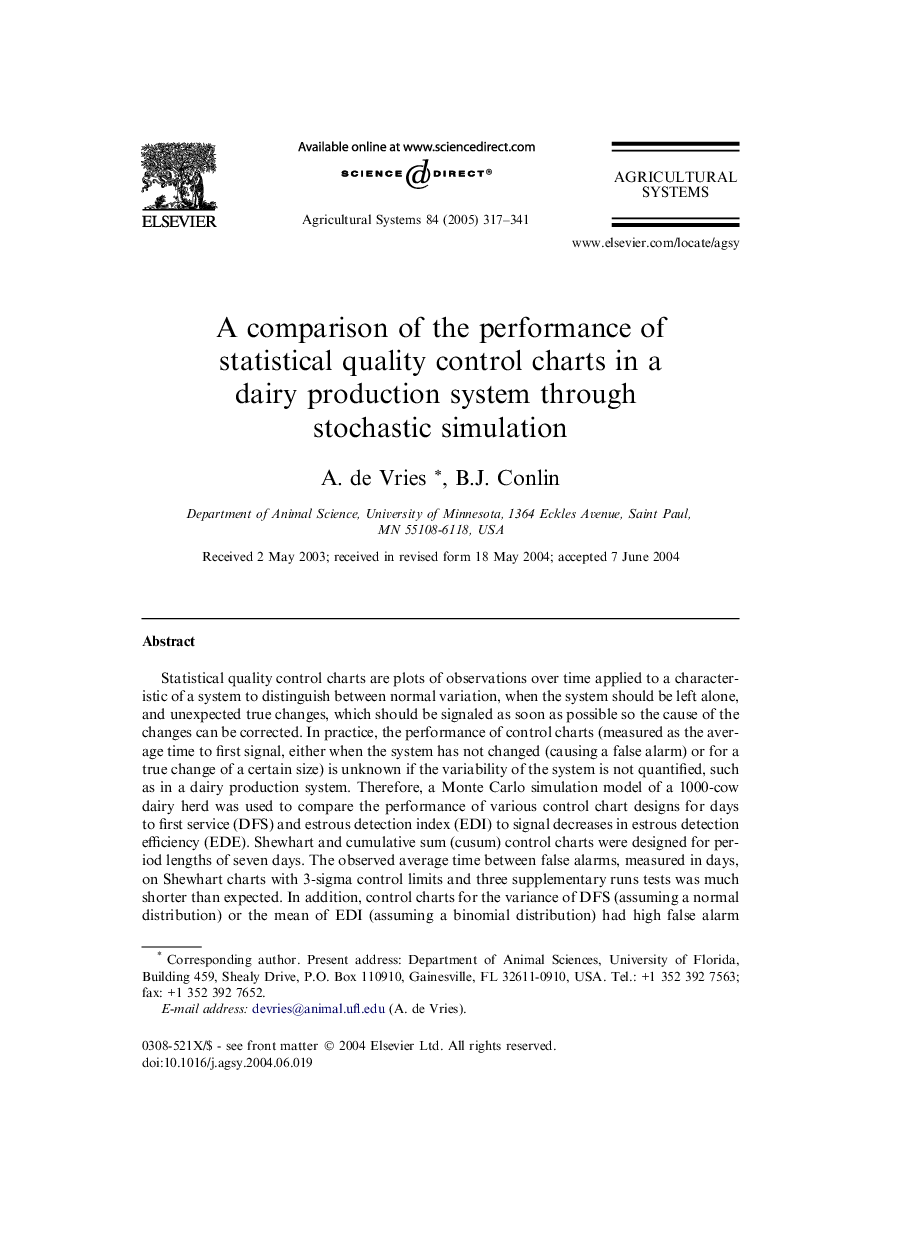| کد مقاله | کد نشریه | سال انتشار | مقاله انگلیسی | نسخه تمام متن |
|---|---|---|---|---|
| 9469269 | 1317918 | 2005 | 25 صفحه PDF | دانلود رایگان |
عنوان انگلیسی مقاله ISI
A comparison of the performance of statistical quality control charts in a dairy production system through stochastic simulation
دانلود مقاله + سفارش ترجمه
دانلود مقاله ISI انگلیسی
رایگان برای ایرانیان
کلمات کلیدی
موضوعات مرتبط
علوم زیستی و بیوفناوری
علوم کشاورزی و بیولوژیک
علوم کشاورزی و بیولوژیک (عمومی)
پیش نمایش صفحه اول مقاله

چکیده انگلیسی
Statistical quality control charts are plots of observations over time applied to a characteristic of a system to distinguish between normal variation, when the system should be left alone, and unexpected true changes, which should be signaled as soon as possible so the cause of the changes can be corrected. In practice, the performance of control charts (measured as the average time to first signal, either when the system has not changed (causing a false alarm) or for a true change of a certain size) is unknown if the variability of the system is not quantified, such as in a dairy production system. Therefore, a Monte Carlo simulation model of a 1000-cow dairy herd was used to compare the performance of various control chart designs for days to first service (DFS) and estrous detection index (EDI) to signal decreases in estrous detection efficiency (EDE). Shewhart and cumulative sum (cusum) control charts were designed for period lengths of seven days. The observed average time between false alarms, measured in days, on Shewhart charts with 3-sigma control limits and three supplementary runs tests was much shorter than expected. In addition, control charts for the variance of DFS (assuming a normal distribution) or the mean of EDI (assuming a binomial distribution) had high false alarm rates. Control limits were then varied such that the observed average time between false alarms on the control charts were similar to the goal of 400 or 800 days. This allowed for a fair comparison to signal true decreases in EDE as soon as possible. Large decreases in EDE were signaled earlier on most control charts than small decreases. Normal cusum control charts applied to the mean of EDI signaled true decreases in EDE the earliest: it took on average 38 days to signal a decrease to 55% EDE, 15 days to 45% EDE, or 10 days to 35% EDE, when the average time between false alarms was 400 days. Control charts designed for lower false alarm rates and those applied to DFS took longer to signal decreases in EDE. The results suggest that stochastic simulation of complex production systems can provide insight in the performance of control charts in practice. Furthermore, a combination of the Shewhart and cusum control charts based on the normal distribution applied to EDI is a good choice when the goal is to signal a decrease in EDE as soon as possible.
ناشر
Database: Elsevier - ScienceDirect (ساینس دایرکت)
Journal: Agricultural Systems - Volume 84, Issue 3, June 2005, Pages 317-341
Journal: Agricultural Systems - Volume 84, Issue 3, June 2005, Pages 317-341
نویسندگان
A. de Vries, B.J. Conlin,